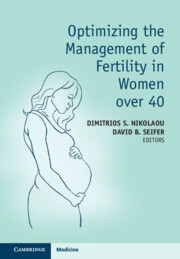Appendix A

Figure A1.1 Cumulative fertility rates at ages 40+ by birth order, selected European countries, 1980–2018.

Figure A1.2 Share of women aged 40–44 who intend to have a child, by year and parity, selected European countries, 2005–11.

Figure A1.3 Share of women aged 35–44 with no or one child who intend to have a child, by level of education; selected countries in Europe.

Figure A1.4 Live births per IVF treatment by age and share of live births following in vitro fertilisation by age, United Kingdom, 2018.



